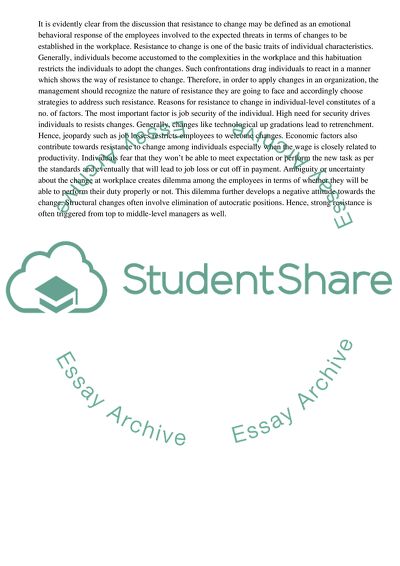Cite this document
(Resistance to Change Phenomenon as a Positive Force for Organisations Essay, n.d.)
Resistance to Change Phenomenon as a Positive Force for Organisations Essay. Retrieved from https://studentshare.org/management/1851881-examine-the-resistance-to-change-phenomenon-as-a-positive-force-for-organisations-and-individuals
Resistance to Change Phenomenon as a Positive Force for Organisations Essay. Retrieved from https://studentshare.org/management/1851881-examine-the-resistance-to-change-phenomenon-as-a-positive-force-for-organisations-and-individuals
(Resistance to Change Phenomenon As a Positive Force for Organisations Essay)
Resistance to Change Phenomenon As a Positive Force for Organisations Essay. https://studentshare.org/management/1851881-examine-the-resistance-to-change-phenomenon-as-a-positive-force-for-organisations-and-individuals.
Resistance to Change Phenomenon As a Positive Force for Organisations Essay. https://studentshare.org/management/1851881-examine-the-resistance-to-change-phenomenon-as-a-positive-force-for-organisations-and-individuals.
“Resistance to Change Phenomenon As a Positive Force for Organisations Essay”, n.d. https://studentshare.org/management/1851881-examine-the-resistance-to-change-phenomenon-as-a-positive-force-for-organisations-and-individuals.


